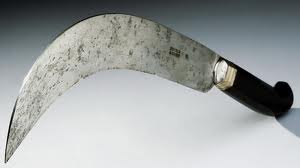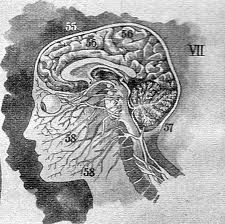 Chinese foot binding possibly originated in the 10th or 11th century in the upper class court dancers. It was usually done to the eldest daughter, when aged between 2 and 5, her feet would be soaked in warm water or animal blood and then she would be given a foot massage. Her nails would then be cut short and then every toe except her big toe would be broken. The foot would then be wrapped in binding cloth, which would be changed every other day. The girl would put smaller shoes on until her feet were about four inches long. In lower class families, the eldest daughter was selected to be a lady, so therefore needed small and dainty feet, whereas younger daughters would workers in fields or concubines.
Chinese foot binding possibly originated in the 10th or 11th century in the upper class court dancers. It was usually done to the eldest daughter, when aged between 2 and 5, her feet would be soaked in warm water or animal blood and then she would be given a foot massage. Her nails would then be cut short and then every toe except her big toe would be broken. The foot would then be wrapped in binding cloth, which would be changed every other day. The girl would put smaller shoes on until her feet were about four inches long. In lower class families, the eldest daughter was selected to be a lady, so therefore needed small and dainty feet, whereas younger daughters would workers in fields or concubines..jpg) The process was started before the arch had fully developed, hence why the children were young when it started. The feet would often be unbound and rebound, while checking for infection or damage to the toes.
The process was started before the arch had fully developed, hence why the children were young when it started. The feet would often be unbound and rebound, while checking for infection or damage to the toes.A common issue with foot binding was that the toes would often become infected due to how they were folded up under the foot. This meant that some flesh would become rotting, so the feet, while unbound would be soaked in a solution that made the necrotic flesh fall off. Additionally, even if the feet were treated and cleaned well they could still fill with puss and burst, which would be extremely painful and cause an unsavory odour. Women would have to continue to bind their feet even after it was the ideal 3 inches, the feet when unbound to be washed would have to be rebound quickly, because apparently the feet losing shape was as painful as the original binding.
.jpg) The reason that foot binding was continued despite it being a painful and dangerous was because it was considered attractive, women with normal feet were regarded as strange, freakish even. A woman could be unattractive but have perfectly curved lotus feet and would be able to find a husband.
The reason that foot binding was continued despite it being a painful and dangerous was because it was considered attractive, women with normal feet were regarded as strange, freakish even. A woman could be unattractive but have perfectly curved lotus feet and would be able to find a husband.I do realize this is short, I threw this together from all my existing research, so might come back an add to it. I am really looking forward to returning to posting regularly, so please return.
Good Day.



.jpg)
.jpg)



.jpg)



.jpg)

